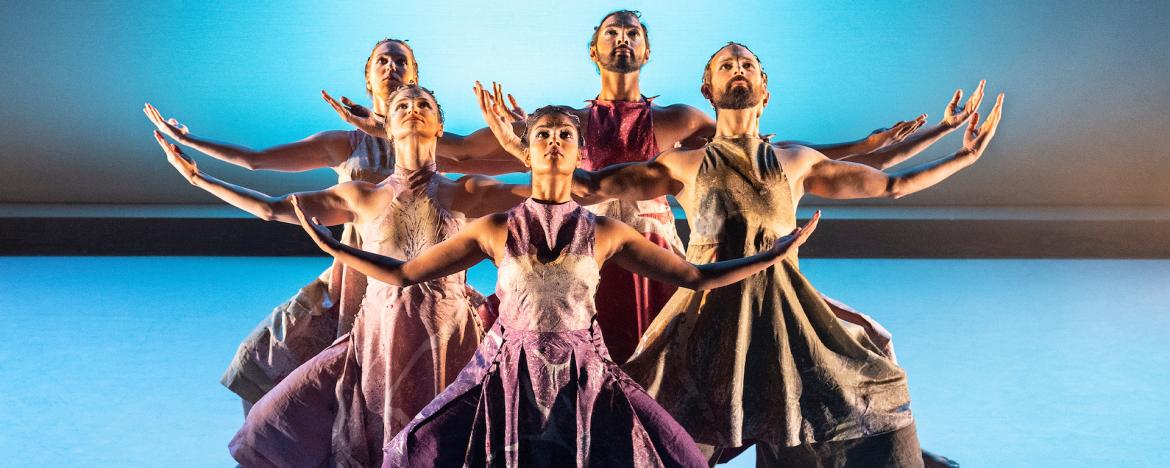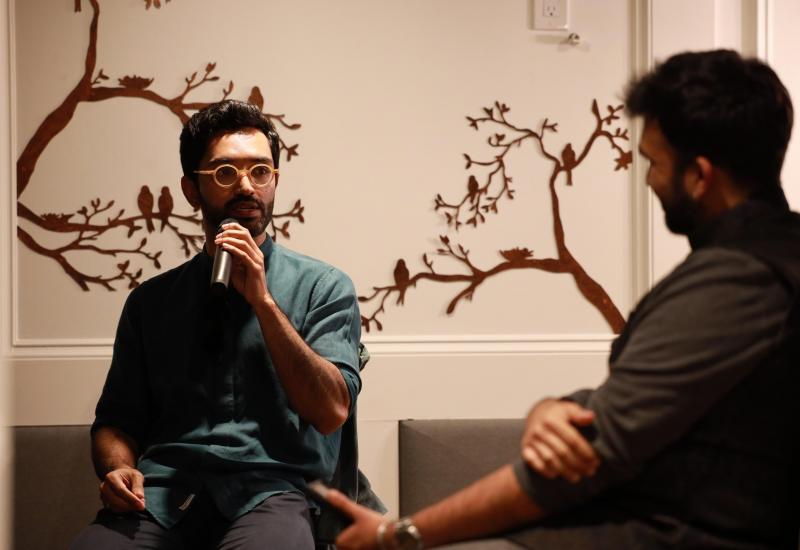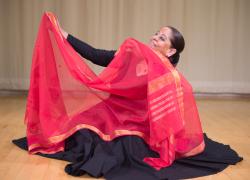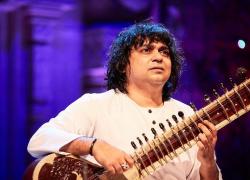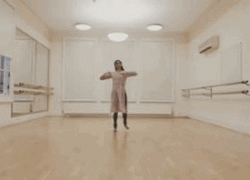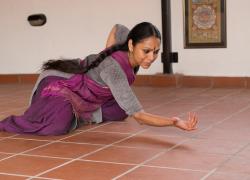Seeta Patel - In Conversation
Image: Foteini Christofilopoulou
Ahead of the Sadler’s Wells premiere of Seetal Patel Dance Company’s Rite of Spring (13 March 2023), the choreographer takes a break from rehearsals to speak to Pulse about why having the biggest ensemble of bharatanatyam dancers on stage creating a ‘powerhouse of energy’ is going to be an awe-inspiring experience.
1. The Rite of Spring by Igor Stravinsky has been a favourite with many choreographers – what drew you to it and what can bharatanatyam bring that is unique?
Bharatanatyam is traditionally a solo dance form and over the years I enjoyed seeing and dancing solo work but I'd never really connected with ensemble work, so I thought, why don't I try my hand at it? I guess it was a natural kind of progression for me to look at works that had been created in an ensemble format within the ballet and contemporary dance canon, and there are obvious choices that came up like Swan Lake and Bolero and The Rite of Spring.
So I decided to try a little experiment with five bharatanatyam dancers to see if I could, how I would interpret short excerpts of these compositions, and The Rite of Spring just called to be made in its entirety. Bharatanatyam just suited the music of Stravinsky so well. And from that small experiment, it's grown into this huge journey.
2. Was it daunting to fit bharatanatyam jattis into the existing musical structure ?
The way I approached the score was to work with a colleague and friend of mine who is trained as a classical pianist, and he and I went through the score – the two-piano version of The Rite of Spring – and compared it to the symphonic orchestration of the work. As my friend was explaining the bars and the structures of the music, I would translate it into patterns and phrasing that I understood and that sometimes overlapped with South Indian classical music counts, that seemed to make sense with the phrasing; and that's how I unpicked the entire score – to be able to then discuss and translate it to the dancers that I worked with from the bharatanatyam world. It was pretty daunting because this piece of music has so many different aspects to it: it's rhythmic, it's melodic, it's discordant in lots of places. It's very, very mercurial in terms of jumping from accents where you don't expect them to create a sense of tension and tempos change depending on who's conducting it. So it was really interesting for me to understand how to break it down and then on top of that work with a narrative that suited each section based on what Stravinsky had originally titled them.
3. Scaling up the production from the former version with six dancers to twelve must have presented both a thrill and a challenge – what have you learnt from the process?
Scaling up the work from six dancers to twelve has been a long journey in the making. We had COVID in the middle of it and Brexit has also made travelling and visas and everything a bit harder for people now. I don't think I could have comprehended at the start of this journey that I would be where I am now with the work and about to embark on this amazing performance with the Bournemouth Symphony Orchestra as well, and bringing together such lovely dancers from around the world to populate the company. It's such a humbling experience and so thrilling at the same time to see the work in its full glorious state from the six-dancer version to now double that number. I'm still learning from the process all the time, not just about the work itself, but about myself and how I direct and conceive the work, how I choreograph and how I bring together dancers. Even though we're all trained in bharatanatyam, everyone has a very different experience and background. Also, ages within the company range from 18 to 43, so we have a really broad spectrum of talent in terms of all the dancers that I brought together. It's a constant learning process for me, which I hope will stand me in good stead for the next work.
4. How many rehearsals will the dancers have with the Bournemouth Symphony Orchestra before the show?
We don't have much time with the Bournemouth Symphony Orchestra to rehearse with them. This is one of their staple works – it's a consistent part of their repertoire. We have been working as a company with a recording made for us by the Orchestra. So hopefully the kind of work that's happened already is going to serve us well when we deliver the final piece. In the summer I invited Kirill, the Chief Conductor of the Orchestra, to come along to some of our rehearsals when we were just remounting the six-dancer version for an outdoor showing of the work. He was just flabbergasted and so bowled over by the dancers and how powerful the form was, and he just couldn't wait to get started. When they recorded the music for us I went down to Poole and I was sitting in front of seventy-three amazing musicians who had recorded this Rite of Spring, especially for my company, and I was able to have discussions with Kirill around setting tempo, aspects of the work to make sure it was still manageable for us to dance and fit the choreography that I'd set, and hearing certain layers of the music rising up to the top in the mix of it all. So, we have done quite a bit of work and now when we come together, we will have three sessions and the dress rehearsal. So hopefully that will be enough, given that all parties have put in a lot of work at this point.
5. The dancers have been recruited both from the UK and abroad, could you tell us how that worked?
I, of course, champion supporting UK talent and we have four dancers from the UK working in the company. In the past I've had some more as well, but one of the difficulties to populate a company and a work like this, which requires a full-time commitment, five, six days a week for several weeks – two months really – is that because there's such a lack of professionalisation routes within the UK, it means that I wasn't able to accommodate people having other jobs and we weren’t only going to rehearse at evenings and weekends. This was a different kind of commitment that I was asking from them. So I did have to look overseas to find dancers who were able to commit to this project full time and also who were strong enough to do the work, and do the piece justice.
6. This is the biggest ensemble of bharatanatyam dancers presented on the Sadler’s Wells stage – how does that make you feel?
I feel extremely proud that it's there amongst the main programme of the venue, that it's not just part of an Indian festival or world festival or whatever, but it's actually there amongst amazing other companies like Nederlands Dans Theatre and Akram Khan and Scottish Ballet, to name a few. So yes, I do feel extremely proud. I genuinely started to pinch myself to believe that this has actually come about. I feel so proud of myself and all the dancers and all the team that have helped us put this beast together.
7. Can you describe what the audiences will experience from Seeta Patel’s version of The Rite of Spring?
From the past performances of the smaller-scale version with six dancers we've always had such a positive response from audience members who have found the dance form of bharatanatyam to sit so well with the Stravinsky score. Several times I've heard from the audience that Stravinsky would have really loved this work and that bharatanatyam was made for this music and that they make great bedfellows, bharatanatyam and Stravinsky. So I just hope that this takes it to the next level because we are bringing the live music score, which is so, so awe-inspiring, alongside twelve really incredible bharatanatyam dancers who will be a big powerhouse of energy. I think people will just be gobsmacked with what they'll see.

